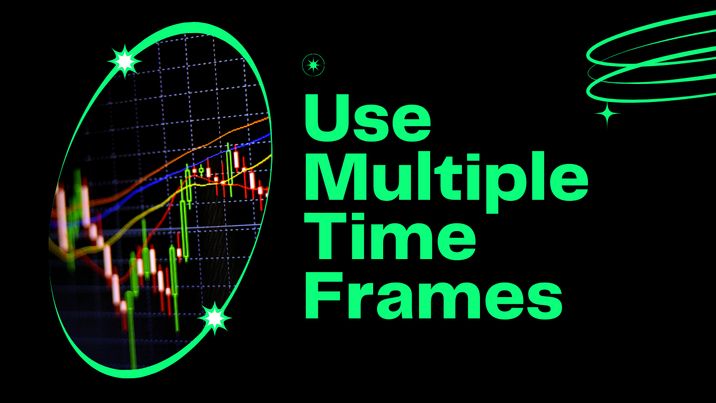How to Read Crypto Charts Like a Pro

Cryptocurrency trading can be incredibly profitable, but it comes with its complexities. To make informed decisions, it's crucial to understand how to read crypto charts like a pro. This skill can mean the difference between profitable trades and costly mistakes. In this guide, we'll break down the essential components of crypto charts, introduce you to key indicators, and show you how to interpret market movements effectively.
Understanding the Basics: Types of Crypto Charts
Crypto charts are graphical representations of market data over time. There are several types of charts, but the most common ones used by traders include:
- Line Charts: These are the simplest form of charts that display the closing price of an asset over a period of time. Line charts are great for beginners due to their simplicity, but they don't offer much detail about market sentiment.
- Bar Charts: These charts provide more information than line charts. Each bar represents a specific period and shows the opening, closing, high, and low prices. This type of chart is helpful for understanding the price range within a particular time frame.
- Candlestick Charts: Favored by most traders, candlestick charts provide a wealth of information at a single glance. Each 'candlestick' shows the opening, closing, high, and low prices. The color of the candlestick indicates whether the price moved up (green or white) or down (red or black) during that period.
Comparison of Chart Types
| Chart Type | Information Provided | Best For |
|---|---|---|
| Line Chart | Closing price over time | Beginners, long-term trends |
| Bar Chart | Open, close, high, and low prices | Intermediate traders, price range analysis |
| Candlestick Chart | Open, close, high, low prices, market sentiment | Advanced traders, short-term analysis |
Key Indicators to Watch
Once you're familiar with the types of charts, the next step is understanding the key indicators that can help you predict market movements.
Moving Averages (MA)
Moving averages smooth out price data to help you identify trends. The two primary types are the Simple Moving Average (SMA) and the Exponential Moving Average (EMA). The SMA computes the average price over a set period, while the EMA places more emphasis on recent prices, making it more responsive to fresh data.
Relative Strength Index (RSI)
The RSI gauges the speed and magnitude of price changes. It's a momentum oscillator that ranges from 0 to 100. A value above 70 indicates that an asset may be overbought (potentially due for a price correction), while a value below 30 suggests it may be oversold (potentially undervalued).
Bollinger Bands
Bollinger Bands consist of a middle band (usually an SMA) and two outer bands that are standard deviations away from the middle band. When the price moves close to the upper band, the asset is considered overbought; when it nears the lower band, it's considered oversold. Bollinger Bands are effective in pinpointing times of heightened volatility — click here to find more about crypto binary trading, a method that also benefits from understanding market volatility.
Volume
Volume indicates the number of assets traded during a specific period. High volume often precedes significant price movements, signaling that a trend may be strengthening or reversing. Volume can be a powerful tool when used in conjunction with other indicators.
Interpreting Market Movements

Reading crypto charts isn't just about understanding individual indicators; it's about interpreting them in the context of the broader market. Here are some strategies to help you read crypto charts like a pro:
Identify Trends
One of the first steps in chart analysis is identifying whether the market is trending or ranging. A trending market moves consistently in one direction (up or down), while a ranging market moves sideways, with prices oscillating between support and resistance levels.
- Uptrend: Characterized by higher highs and higher lows. It's a signal that the market is bullish.
- Downtrend: Defined by lower highs and lower lows, indicating a bearish market.
- Sideways Trend (Range-Bound): The price moves horizontally between support and resistance, showing no clear trend.
Recognize Patterns
Price patterns can give you clues about future price movements. Some common patterns include:
- Head and Shoulders: This pattern typically signals a reversal in an uptrend. It features a peak (shoulder), followed by a higher peak (head), and then another lower peak (shoulder).
- Double Top/Bottom: A double top is a bearish reversal pattern, while a double bottom is a bullish reversal pattern. Both are characterized by two peaks (or troughs) at similar price levels.
- Triangles: Triangles can be ascending, descending, or symmetrical. They represent a period of consolidation before the price breaks out in the direction of the previous trend.
Use Multiple Time Frames

Professional Bitcoin traders often use multiple time frames to get a complete picture of the market. For example, you might use a daily chart to identify the overall trend and a 15-minute chart to time your entry and exit points. By analyzing different time frames, you can avoid making decisions based on short-term noise.
Putting It All Together
Reading crypto charts like a pro involves combining your knowledge of chart types, indicators, and patterns with real-time market data. Practice is key—start by analyzing historical data and backtesting your strategies. As you gain experience, you'll develop an intuition for interpreting charts and making informed trading decisions.
Remember, no single indicator or chart pattern is foolproof. Successful trading requires a comprehensive approach that considers various factors, including market sentiment, news, and global events. By honing your chart-reading skills, you can navigate the volatile world of cryptocurrency trading with greater confidence and precision.